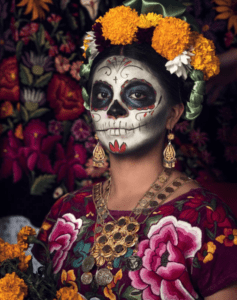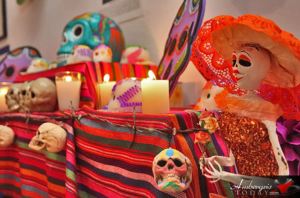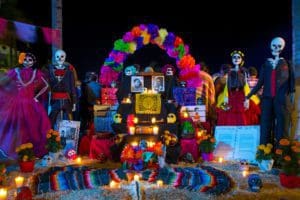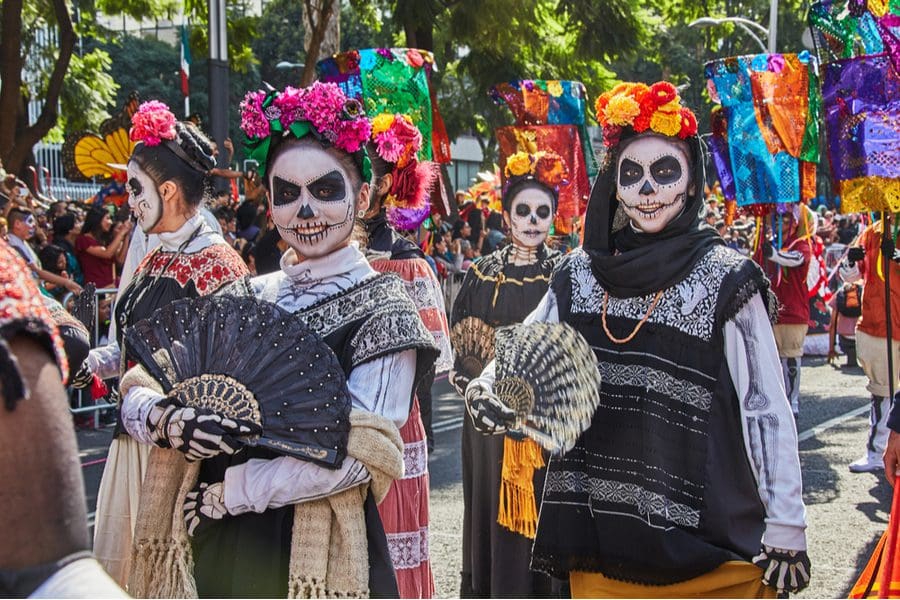The Day of the Dead, or “Día de Los Muertos,” has become increasingly popular in the United States. Perhaps it’s due to the face paint, beautiful dresses, or the colorful flowers accompanying the holiday. Or, maybe it’s because of movies such as Coco, The Book of Life, or the opening scene of Spectre that have piqued people’s interest. If you aren’t familiar with the Day of the Dead, here’s what you need to know.
What Is the Day of the Dead?
The Day of the Dead, “Día de Los Muertos,” is a two-day historically Mexican holiday where families gather to welcome back the souls of loved ones who have crossed over. The customs are a mix of pre-Columbian Mesoamerican Aztec and Nahua tradition and pagan European celebrations of the dead. Eventually, the Catholic church made the holiday its own with All Saints Day and All Souls Day, celebrated on November 1st and 2nd, respectively.

(image via reddit by Jimmy Nelson)
La Catrina
You may already be familiar with La Catrina, the “Dame of the Dead,” who is emulated to celebrate the Day of the Dead. La Catrina is the evolution of Mictēcacihuātl, the queen of the Aztec underworld. The first image of her by Mexican illustrator José Guadalupe Posada was published in 1910; she represented the obsession high-society Mexicans had with European customs. In 1947, famed artist Diego Rivera painted La Catrina in a mural, cementing her as part of the folklore and the face of the Day of the Dead.

(image via ambergris today)
Altars
Day of the Dead altars can be as elaborate or as simple as you want them to be. They are typically decorated with skulls, pictures of the deceased, their favorite food or drinks, sweets, salt, Pan de Muerto (Bread of the Dead), candles, flowers and more.

Cempasúchil
Mexican marigold or cempasúchil is the flower that decorates the altars. The legend for why cempasúchil is the flower of choice begins with two Aztec lovers, Xóchitl and Huitzilin. When war broke out, Huitzilin sadly lost his life. Xóchitl was devastated, and she prayed to the sun god, Tonatiuh, to let her be by Huitzilin’s side. The sun god, out of compassion, turned her into a beautiful flower. When the flower opened, a hummingbird, Huitizilin reborn, kissed its center. They were together again.






